Monday, 4 June 2018 |
| WIRELESS COMMUNICATION & 5G DAY |
|---|
11:00–12:30 (Porto Room)
5G Slicing
| Moderator: | Xueli An, Principal Researcher, Huawei Technologies, German Research Center, Germany |
| Panelists: | Cinzia Sartori, Principal Expert, NOKIA Bell Labs in Munich, Germany |
| Michele Zarri, Technical Director, GSMA, UK | |
| Cipriano Lomba, Technology and Innovation Coordinator, Efacec Group, Portugal | |
| Anders Wännström, Subject Matter Expert LTE/IoT/5G, Ericsson Mobile Broadband Practice |
Summary—Network slicing is one of the fundamental features of 5G, which could enable mobile system to support variant vertical industry (e.g. automotive, manufacturing, energy, financial, healthcare and many others) use cases with very different requirements. This does not only enrich the ecosystem of the telecommunication sector by stimulating new business roles and opportunities, but also help the other industries to achieve their digital transformation vision. Network Slicing is a concept for running multiple logical networks as virtually independent business operations on a common physical infrastructure. Such logical networks could be customized according to vertical industries’ variant requirements with guaranteed service level agreements (SLAs). Major standardization efforts (like 3GPP, ETSI, BBF, etc.) have their own working plan on network slicing that cover different technical domains. 3GPP Release 15 will be frozen in 2018, and 5G commercialization is already foreseen in 2019. Do you think industries are ready for network slicing? The following questions will be addressed in this panel: 1. technical challenges ? 2. Are there any gaps from the standardization 3. For vertical industry, what are the challenges or difficulties for operators to address this issue? 4. New business opportunities and risks for operators? 5. Business opportunities for vertical industries ? etc |
|
Biographies | |
 |
Xueli An is a Principal Researcher at Huawei Technologies, German Research Center. She received her Master and PhD degrees in Electrical Engineering from Delft University of Technology (TU Delft), The Netherlands, in 2005 and 2010, respectively. Within Huawei, she has the global responsibility on network slicing related industry development and innovation program that involve leading the cooperation with vertical industries like automotive, manufacturing, emerging media, etc. She also actively involves in network slicing related research, standardization and industry platform e.g. 3GPP, GSMA, 5GAA. She has over 50 international journal/conference publications and over 20 patent applications in the field of wireless communication, networking, etc. |
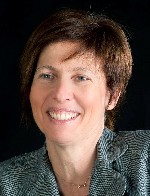 |
Cinzia Sartori is a principal expert in the field of Mobile Network Architecture with focus on 5G at NOKIA Bell Labs in Munich. She is engaged in end-to-end 5G Network Architecture with special focus on Network Slicing, covering radio, transport, core networks as well as Slice Management and Orchestration. She looks at near term network and network slicing deployment as well as evolution in the longer term. In this field, she started since the early days, being one of the originators of H2020 5G NORMA project. Until mid-2013 she led the ‘Self-Organizing Network (SON) Research and Standardization’ project in Nokia Siemens Networks. Earlier she worked in the Network Telecom, O&M; RRM and SS7 in Nokia Siemens Networks, Siemens and GTE. |
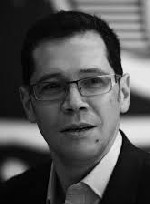 |
Michele Zarri is a technical director in GSMA where he works on advanced technologies and 5G. Michele graduated in telecommunications engineering at University of Pisa (Italy) and completed his studies at King’s College of London (UK). Prior joining the GSMA Michele worked for Deutsche Telekom where he accrued more than 15 years of experience in standardization of mobile technologies. Michele served as chairman of working groups both in 3GPP and GSMA. |
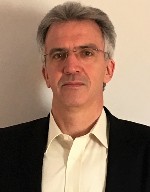 |
Cipriano Lomba is Technology and Innovation Coordinator at Efacec Group, Portugal. He has more than 20 years of experience, most of them leading R&D and Engineering teams developing and supplying integrated ICT solutions for different utility markets. Previously, he was Managing Director of Telecommunications and Signaling Business Division at Efacec for 10 years, after having been R&D Director of the same Business Division, as well as Business Developer Manager for international markets. He holds an Executive MBA from Porto Business School (Portugal), a PhD in Electrical Engineering, from University of Aveiro (Portugal) and an MSc from University of Wales (United Kingdom). He is author or co-author of about one dozen scientific research papers and has an extended track record of participation in international technological conferences, namely in the telecom, mobility and energy sectors. His main areas of interest are related with digital business transformation and the use of ICT technologies to improve operational efficiency of critical infrastructures, namely in energy, environment and mobility systems. |
 |
Anders is a subject matter expert in LTE/IoT/5G in Ericsson’s Mobile Broadband Practise in the Asia Pacific and Oceania region where he is intimately involved in the introduction and evolution of new technology for the most advanced mobile broadband networks. He has lived and worked for Ericsson in Sweden, Hungary, Australia and has spent the last seventeen years in the Asia Pacific region. |
14:00–15:30 (Porto Room)
5G for URLLC: Niche or Mainstream Capability?
| Moderator: | Jeffrey Owen, Head of RAN Strategy, Vodafone Hutchison Australia |
| Panelists: | Andreas Mueller, Head of Communication and Network Technology, Bosch Corporate Research, Germany |
| Erol Hepsydir, Head of RAN and Devices Strategy, Hutchison 3G, UK | |
| Gustav Wikström, Research Leader, Ericsson Research, Sweden |
Summary—URLLC has been identified as one of the three general categories of services for 5G. enhanced Mobile Broadband (eMBB) will continue to evolve from 4G focusing upon greater data rates whilst massive Machine Type Communication (mMTC) will do likewise whist focusing upon achievable device density to distinguish itself from its predecessors. But what about Ultra-Reliable and Low Latency Comms? – these are really new classes of service without any precedent but they receive strong focus in standardization and from a 5G vision perspective. Will they become all pervasive and on-going categories that account for significant new sources of revenue? To what degree will they influence how operators think about their network and business, and will they eventually impact the daily lives of consumers and how businesses operate? |
|
Biographies | |
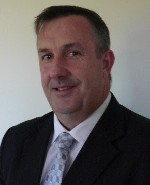 |
Jeff Owen graduated from the University of Queensland in Australia in 1989 with a BSc and in 1990 with a B.E. (Hons) in Electronics and Communications. He commenced his career in the Australian Department of Defense in tactical fighter aircraft and became a member of teams undertaking pivotal Research & Development for guided weapons and airbourne radar. He graduated in 1994 with a B.Sc (Hons) in Mathematics from the University of Adelaide. He worked for GEC Marconi Systems contributing to the design of the Jindalee Operational Radar Network and following this held industrial consulting roles in radio product strategy and radio system design, before briefly returning to the defense industry. Jeff came to the cellular industry in 2000 being appointed as the National RF Engineering Manager of AAPT, and then in the same role for Hutchison Telecommunications Australia in 2001 where he was part of a pioneering team establishing Australia’s first WCDMA network and 3G business. Since the merge with Vodafone locally he has been in the role of Head of RAN Strategy for Vodafone Hutchison Australia where he establishes a long-term technology roadmap with a recent focus upon 5G and beam-forming technology. He advocates a rigorous quantitative cost-benefit optimization approach and employs a pull-through framework to establish business cases for spectrum acquisition, technology adoption, and infrastructure investment. |
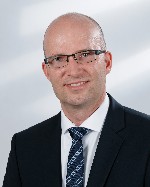 |
Dr. Andreas Mueller is the Head of Communication and Network Technology in the Corporate Research Department of Robert Bosch GmbH in Stuttgart, Germany. As part of this role, he is coordinating Bosch’s research activities in the area of future industrial connectivity infrastructures as well as the topic “5G for Industry 4.0” within the Bosch group. This is done in close collaboration with various business units and external partners. In addition to that, he is the Chairman of the Board of the “5G Alliance for Connected Industries and Automation” (5G-ACIA), which recently has been established in order to make sure that 5G for the industrial domain becomes a success. This is done by providing a global forum for discussing related technical, regulatory and business aspects and by brining all relevant stakeholders together. |
|
Dr. Erol Hepsaydir received BSc and MSc degrees in electrical and electronics engineering from Middle East Technical University, Ankara, Turkey, in 1985 and 1987 respectively. He completed his part-time PhD in electrical engineering at University of Technology, Sydney in 2001. He is currently the Head of RAN and Devices Strategy at Three in the UK. His primary interest areas are next generation telecommunication and wireless systems including 5G with particular emphasis on PHY/MAC layer, network information theory, and network architectures with upper layer protocol design. He has been appointed as Royal Academy of Engineering Visiting Professor at the University of Kent in United Kingdom where he lectures Digital Communications, Information Theory and Mobile Communications. He was the IF&E Chair of IEEE ICC2015 conference which was held in London on 8 June 2015. Dr. Hepsaydir is the co-author of over 25 peer-reviewed scientific articles (800+ citations), co-inventor of 15 patents and patent applications. |
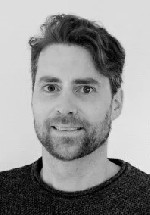 |
Gustav Wikström is a Research Leader at Ericsson Research in Stockholm, Sweden. He has a background in Experimental Particle Physics and received his Ph.D. from Stockholm University in 2009, after Master studies in Engineering Physics in Lund, Uppsala, and Rennes. After Post-doc studies in Geneva, he joined Ericsson Research in 2011. There he has been driving the evolution of network performance studies, simulator development, and worked with WLAN enhancements. Since 2015 he has been the driver of latency and reliability improvements (URLLC) in LTE and NR, working towards 3GPP 4G/5G standardization and developing new concepts for URLLC, and gradually with more focus on Industrial IoT. Recently he started as Research Leader in the area Radio Network Architecture and Protocols. |
16:00–17:30 (Porto Room)
5G: Architecture Options and Network Evolutions
| Moderator: | Riccardo Trivisonno, Principal Engineer and Team Manager, Huawei Technologies, Germany |
| Panelists: | Dirk Trossen, Senior Principal Engineer, InterDigital Europe, UK |
| Jorge Carapinha, Senior Expert, Altice Labs, Portugal | |
| Steve Tsang Kwong U, Mobile Packet Core Architect, Orange Labs, France | |
| Hans Joachim Einsiedler, Head of Network Control Team, Deutsche Telekom |
Summary—Multiple architectures have been proposed by industry to deploy 5G networks, with various integration levels with a pre existing 4G network architecture. In the early standardization phase (early drop) under 3G PP Release 15, work has focused on the non standalone option (NSA), which allows smooth migration with a 4G core network being called upon to be involved in the management of the 5G connectivity. This option is targeted for early deployments, and will be later complemented with a Standalone option '(SA) based on a full 5G core. It may be anticipated that the choice of a deployment option depends on multiple parameters such as the legacy situation, the target service deployment and their QoS requirements. From that perspective, the panel will explore i.a: - the various option for deployment as addressed by 3G PPP and their characteristics; - the migration scenario and the relevance of the various options for different operators types (4G legacy, new entrant, vertical, MVNO's) - the migration scenarios towards cloud and SDN platforms and service oriented architectures; - The potential for various deployment option to capture new businesses and to enable new business models, notably with vertical industries - the currently missing architectural elements at standardization level that are considered key to facilitate 5G deployments for new business models; - the level of openness and open interfaces that should be provided to enable smooth integration and business with verticals. |
|
Biographies | |
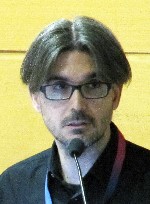 |
Riccardo Trivisonno has been working as Principal Engineer at Huawei Technologies European Research Center since 2011, and he is now leading an R&D group within the Applied Communication Technology Lab (ACTL). The group, which focuses on End to End Communication System Architecture, Network Slicing and Verticals integration into mobile network ecosystem, is currently working on 5G technologies development, strategic IPRs, and technology transfer towards standardization bodies, mainly 3GPP Service and System Aspects (SA) working groups. Particular emphasis is given to vehicular communications, industry automation and massive IoT. |
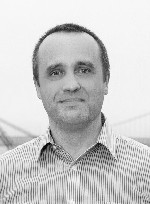 |
Dr. Dirk Trossen is a Senior Principal Engineer at InterDigital Europe, the European branch of InterDigital Inc. His main responsibility lies in establishing the European presence of InterDigital through engagements within the EU-funded Horizon 2020 work programme as well as within UK-funded efforts. Dirk has more than 15 years of experience in network architectures, services and wireless technology. He is currently technical lead on the European efforts POINT and RIFE as well the test bed efforts of the FLAME project. He is also an active contributor to European efforts in the 5G (PPP) space through contributions to ETP and 5GPPP whitepapers as well as main standardization bodies. |
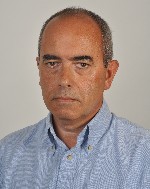 |
Jorge Carapinha graduated with a BS in Electrical and Computer Engineering (1984) from the University of Coimbra and received an MSc in Electronics and Telecommunications (1998) from the University of Aveiro. He has been with Altice Labs (formerly PT Inovação) since 1985, and has a long record of participation in international collaborative projects in the framework of European R&D programmes such as IST, ACTS, FP7 and H2020. He has vast experience in technical areas such as IP backbone technologies and architectures, MPLS and QoS. Currently, his main fields of interest are Network Virtualisation, Software Defined Networking, Cloud Networking, Network Slicing and 5G. He has authored or co-authored over 40 scientific papers in major journals and international conferences, as well as several book chapters. |
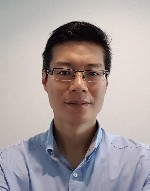 |
Steve Tsang Kwong U graduated from Supélec and MSc from Polytechnique Montreal in 2000 and joined Orange Labs Network in 2002 as a mobile packet core network architect on 3G systems and working in particular on the IMS both in Orange and in 3GPP standards within the TSG-SA WG2 in charge of the network architecture. Since then, he has been involved in the different evolutions of the mobile packet core including 4G and 5G systems. In particular, he is currently involved in Orange 5G program and initiatives to develop Orange strategy for the deployment of the 5G system on the core network part. He is also still following the standardisation work in 3GPP as an Orange delegate in TSG-SA plenary, and has also been involved in NGMN 5G project where he led the E2E architecture group to develop the NGMN vision on Network Slicing and Edge Computing for 5G systems. |
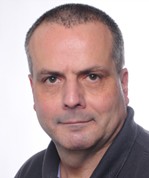 |
Hans Joachim Einsiedler, from Ravensburg, Germany, received the Dipl.-Ing. degree in Electrical Engineering from the University in Stuttgart, Germany, in 1994. He worked at the IBM Research Laboratory in Zurich, at the Ecole Polytechnique Federale de Lausanne, and at the University of Bern in Switzerland. He joined Deutsche Telekom in 1999. Since then, he was leader of EU and EURESCOM R&D projects. He joined the Telekom Innovation Laboratories on May, 1st, 2004 and is responsible for the Seamless Network Control team within Deutsche Telekom AG/Technology Innovation. His topics of interests are next generation control platforms and Internet Protocol control plane. Hans is the Deutsche Telekom AG responsible for the European Technology Platform Networld2020, the ETNO R&D task force, the Future Internet and 5G Infrastructure Public-Private-Partnership initiative, and the 5G Association. Currently he is involved in NGMN and 3GPP SA2 activities related to the future converged control plane and the end-to-end architecture for 5G. |
Tuesday, 5 June 2018 |
| ACE: AUTONOMOUS, CONNECTED AND ELECTRIC VEHICLES DAY |
|---|
11:00–12:30 (Porto Room)
Pedestrian Safety: One Key Application of 5G
| Moderator: | Klaus David, Head Chair-ComTech, University of Kassel, Germany |
| Panelists: | Alin Stanescu, Director for Government Affairs, Qualcomm, Belgium |
| Antonio Fernández Barciela, R&D Automobile connectivity, Peugeot, Spain |
Summary—Every year about a quarter of a million of VRUs (Vulnerable Road users, who are pedestrians and bicyclists) are killed in traffic accidents with cars and lorries. An even much larger number of VRUs gets injured. So far passive approaches (best possible design of an automobile, to be as best as possible less harmful in case of a collision) and approaches enabling cars to sense its environment (by using vision, LIDAR, infrared, radar) have been introduced and show encouraging improvements. To facilitate the vision of accident free traffic, a collaborative approach – where VRUs and cars are networked by 5G, is a very promising new approach. This approach is becoming more and more attractive, due to the advances of smartphone and mobile sensors, GPS and mobile networks (especially 5G) The panel speakers will provide an up to date overview about this exiting, new application area. The following questions will be addressed in this panel:
|
|
Biographies | |
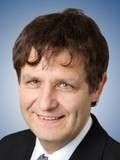 |
Prof. Dr.-Ing. After studying physics at the University of Siegen for four years, Klaus David (born in Frankfurt am Main) was a research assistant at IMEC in Gent (Belgium) and promoted to Dr.-Ing. At the University of Siegen. |
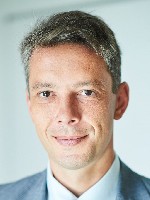 |
Alin Stanescu is Director for Government Affairs at Qualcomm. He supports European governments and regulatory bodies by providing technology expertise and market analysis on the internet of things and connected and autonomous driving amongst others. He represents Qualcomm in various trade organizations and regulatory bodies, such as the CEPT, OECD BIAC, 5GAA and Digitaleurope. |
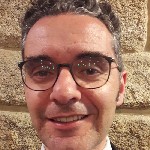 |
Antonio Fernandez Barciela, Telecom engineer with long experience in mobile oriented projects and a strong IT background in network, security and protocols. Antonio has experience in voice and data architecture for corporate mobile environments. |
14:00–15:30 (Porto Room)
Data Networking Challenge of the Autonomous Vehicle: An Industry Outlook
| Moderator: | Rui Costa, Chief Technology Officer, Veniam, Portugal |
| Panelists: | Gerhard Stanzl, Head of Pre-development Smart Mobility and Machine Learning AUDI AG, Germany |
| Raphael Meillat, General Manager Market Intelligence, Corporate Strategy & Planning, Nissan, Europe | |
| Luis Reis, Mobility Manager, CEiiA, Portugal |
Summary—In today’s increasingly mobile world, usage of wireless data is skyrocketing—not just by legions of mobile phone and tablet users but by vehicles themselves. Even traditional, driver-controlled vehicles, are increasingly connected to the cellular network for map downloads, streaming music, and software updates on the fly, but that’s nothing compared to what autonomous vehicles will demand. Because of the vast array of sensors they rely on – GPS, lidar, radar, video cameras, and more – these cars collect, produce, and transmit a mountain of information that can currently total up to four terabytes per day. On top of that, we will have new services, business models, and redefined industries that will rely on a very high-demanding communications network and infrastructure. In this panel, we will explore how different stakeholders of the ecosystem look at the vehicle connectivity and challenge. From the technical innovations to new business models, we will explore how the automotive, telecom and smart city industries should start preparing today for the fast-paced, highly connected, reality ahead of the curve. |
|
Biographies | |
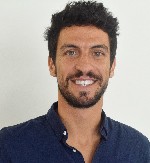 |
Rui Costa is the CTO of Veniam and Founder of IEEE Academic. |
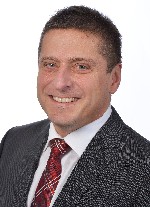 |
Gerhard Stanzl joined AUDI AG in 2011. As Head of Pre-development Smart Mobility and Machine Learning, he is currently responsible for innovative services of connected and automated cars. His initiatives include car2car/car2infrastucture services, usage of machine learning for the interior of the car as well as smart mobility solutions. |
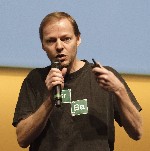 |
Raphael is responsible for Market Intelligence and Customer Insights for Nissan across Europe and Russia. |
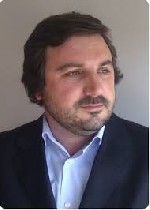 |
Luis Reis is Business Development Manager for Mobility at CEiiA. He is currently engaged in the development and internationalization of CEIIA’s intelligent systems and solutions, in collaboration with a wide variety of partners. |
Wednesday, 6 June 2018 |
| CONNECTED WORLD DAY |
|---|
11:00–12:30 (Porto Room)
Smart City – Living Labs
| Moderator: | Haris Gacanin, Nokia Bell Labs, Belgium |
| Panelists: | Kathleen Philips, Director IoT, imec, The Netherlands |
| Cristian Patachia-Sultanoiu, Innovation Team Manager, Orange, France | |
| Ljubco Jorguseski, Senior Consultant, TNO IC, The Netherlands | |
| Mythri Hunukumbure, Principal Research Engineer, Samsung R&D Institute, UK | |
| Yichao Jin, Principal Research Engineer and Project Lead, Toshiba, UK |
Summary—A smart city is an urban area that uses different types of electronic data collection sensors to supply information which is used to manage assets and resources efficiently. This includes data collected from citizens, devices, and assets that is processed and analyzed to monitor and manage traffic and transportation systems, power plants, water supply networks, waste management, law enforcement, information systems, schools, libraries, hospitals, and other community services. The smart city concept integrates information and communication technology (ICT), and various physical devices connected to the network (the Internet of things or IoT) to optimize the efficiency of city operations and services and connect to citizens. ICT technology allows city, government and citizens to interact directly with communities and city infrastructure and to monitor what is happening in the city and how the city is evolving. The technology aims enhancing quality, performance and interactivity of urban services, to reduce costs and resource consumption and to increase contact between citizens and government. Smart city applications are developed to manage urban flows and allow for real-time responses. |
|
Biographies | |
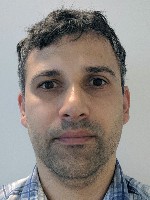 |
Haris Gačanin received his Dipl.-Ing. degree in Electrical engineering from the University of Sarajevo in 2000. In 2005 and 2008, respectively, he received MSc and PhD from Tohoku University in Japan. He was with Tohoku University from 2008 until 2010 first as Japan Society for Promotion of Science postdoctoral fellow and later, as Assistant Professor. In 2010, he joined Alcatel-Lucent (now Nokia), where he is currently Department Head in Nokia Bell Labs. His professional interests are related to application of artificial intelligence with machine learning for autonomous networking, and design of mobile and wireless systems. He has 200+ scientific publications (journals, conferences and patent applications) and invited/tutorial talks. He is senior member of the Institute of Electrical and Electronics Engineers (IEEE) and the Institute of Electronics, Information and Communication Engineering (IEICE). |
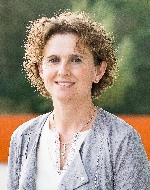 |
Dr. Kathleen Philips is a director at imec, The Netherlands, leading the programs on next-generation IoT technologies. Her research includes roadmaps on state-of-the-art design for mm-wave communication and radar, ultra-low power communication, sensors and localization; as well as new research tracks on learning, neuromorphic computing and data driven solutions. The imec innovations get validated in real-life use cases and as part of large-scale test beds for Smart City and Smart Building living labs. With over 60 papers at ISSCC and IEDM, and over 100 patents, this imec program has been at the forefront of IoT innovations, for over a decade. |
|
Cristian Patachia-Sultanoiu is an experienced manager with over 17 years of experience in telecom industry, covering an extensive spectrum of technology, business development and innovation management. He received a B.Sc. degree in Electronics and Telecommunications at the Satellite and Mobile Communications department of the Politehnica University Bucharest in 2000 and also his M.Sc. degree in Optical Fiber, Fixed and Mobile Radio Communications at the Politehnica University of Bucharest in 2001. Cristian also has an Executive MBA in Finance from University of Sheffield and has been working for Orange Romania since 2000, currently managing the Development & Innovation team of the Engineering department. He is currently coordinating several research projects in the following areas: future internet networks, cybersecurity, smart city, Wi-Fi offload for cellular data networks, monetisation of network’s APIs, mobile cloud computing and IoT/M2M. In addition, he is coordinating Orange Educational Program, Orange Fab Romania accelerator, Innovation Labs pre-accelerator and several Horizon 2020 research and innovation projects on various topics such 5G PPP technologies and systems, next generation emergency services and critical infrastructure security. |
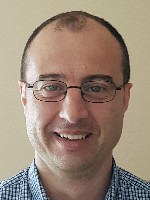 |
Ljupco Jorguseski received a Dipl. Ing. degree in electrical engineering from Ss. Cyril and Methodius University, Skopje, Republic of Macedonia, in 1996 and a Ph.D. degree in 2008 from Aalborg University, Denmark. From 2003 he has been a senior consultant, wireless access at TNO (Netherlands Organization for Applied Scientific Research), in Delft, focusing on radio planning and self-optimization of wireless networks, including 3GPP standardization. He has co-authored more than 15 scientific papers and book chapters, and has patents pending. |
|
Mythri Hunukumbure is a principal research engineer at Samsung R&D Institute UK, having joined them in 2015. He led the WP5 (on Multi antenna and Multi-node technologies) of the recently concluded EU project mmMAGIC, which researched the application of mm-wave technologies for 5G. Currently he is leading a work package in the phase II EU/5GPPP project ONE5G, which looks at end to end optimisations for 5G technologies. He also contributes actively to the 3GPP RAN1 standardisation, covering several topics in NR. During his 11 year span in the mobile communications industry, he contributed to, and later led, research on WiMAX and LTE standardisation, Green Wireless, Femto cell innovations, D2D adaptations for 5G and Phase noise compensation in mm-wave. He has secured more than 30 IPR and published more 30 papers in reputed IEEE journals and conferences. |
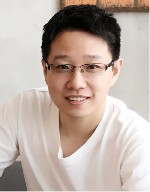 |
Dr. Yichao Jin is a Chartered Engineer and a Principal Researcher at Toshiba Research Europe Ltd., Bristol, UK. He has 10 years’ industrial R&D experience with Samsung, BT and Toshiba etc. He has authored more than 30 publications and 10 patents. His research interests including Low power wireless communication, Highly reliable industrial wireless monitoring and control systems, Low power wide area networks and other IoT mesh networking technologies. He is currently the project lead for a pilot smart city project, involving a deployment of IoT devices with cutting-edge wireless communication technologies in the City of Bristol, UK. He holds a PhD degree in Electronic Engineering from the University of Surrey. |
14:00–15:30 (Porto Room)
IoT Technology and Business Models
| Moderator: | Kathleen Philips, Director IoT, imec, The Netherlands |
| Panelists: | Anuj Jain, Director of the Strategic Innovation Group, Cisco |
| Pieter Willems, Sales and Marketing Manager Security Products, Silex Inside | |
| Vikas Dhingra, Senior Consultant, Bell Labs Consulting | |
| Wouter Haerick, Director Research Valorization, Imec IDLab | |
| Stefan Brueck, Dept. Director of Modem Technology Qualcomm Germany |
Summary—Beyond the hype, IoT is becoming a reality. IoT enables real-time dashboards of industrial processes or office infrastructure. It is bringing new capabilities towards autonomous driving, and much more is yet to come. Apart from driving the technology roadmaps, IoT is a game changer in terms of business models. New models for pay-per-use or maintenance subscriptions and aim at capturing more value beyond the traditional sales of silicon or connectivity. In this panel, industry experts from across the ecosystem reflect on the current status of IoT deployments, on the value of data, connectivity, security, silicon and R&D while providing insight in new business models to play a higher role in the value chain. |
|
Biographies | |
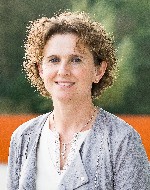 |
Dr. Kathleen Philips is a director at imec, The Netherlands, leading the programs on next-generation IoT technologies. The research includes roadmaps on state-of-the-art design for ultra-low power sensing, communication and localization; as well as new research tracks on learning, neuromorphic computing and data driven solutions. The imec innovations get validated in real-life use cases and as part of large-scale testbeds for Smart City and Smart Building living labs. With over 60 papers at ISSCC and IEDM, and over 100 patents, this imec program has been at the forefront of IoT innovations, for over a decade. Kathleen has joined imec in 2007 and has held positions as director IoT, program director for Perceptive Systems, program manager for ULP Wireless and as a principal scientist. Before that time, she was a research scientist at the Philips Research Labs for over 12 years. She holds a Ph. D in electrical engineering has authored and co-authored over 60 papers and holds various patents. |
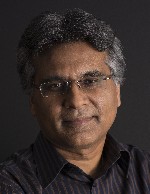 |
Anuj Jain is a Director in the Corporate Strategic Innovation Group of Cisco based in Switzerland. His main responsibility is to identify and incubate new growth initiatives for the company. He leads a team of experts in very diverse domains such as IoT, Fog Computing, Cloud, AI-ML, Cybersecurity, Networking etc... |
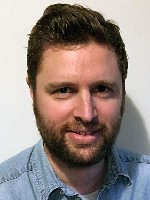 |
Pieter Willems holds a master degree in micro-electronics. He started his career as an application engineer in the image sensor industry. He consequently held several marketing and product management positions in this market. As a strategic marketing and product manager, he did market analysis and product definitions for various companies, growing new products into multi-million euro businesses. This was achieved by doing direct sales as well as by setting up and managing a worldwide rep/distribution network. Since October 2016 he has taken up the role as the strategic sales and marketing manager for the security IP products at Silex Inside. Here he is responsible for transforming the embedded security IP business from a service oriented strategy to a product driven company |
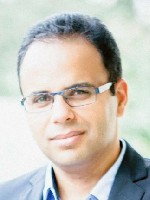 |
Vikas Dhingra is a Senior Consultant at Bell Labs Consulting, Nokia. He has twenty years of experience in Telecommunications and has extensive experience on techno-economic analysis of advanced network technologies, cellular protocols standardization, Systems Engineering and Design. |
 |
After receiving his Master’s degree in Electrical Engineering from the Ghent University (2001), Wouter Haerick started working in the telecommunication market and participated in various delivery projects at fixed and mobile operators in Europe. In 2004, he joined research group IBCN as a research assistant where he was involved in various European and national research project. In 2009 Wouter obtained a PhD in the field of Computer Science. In 2011, he became business developer for Ghent University (Industrial Research Fund). In this role, he has been involved at iMinds as CTO, Future Internet Technologies and currently as Director Research Valorization at IMEC. Wouter holds an MBA from Vlerick Leuven Management School and is alumni from London Business School. He is lecturer at Ghent University in the entrepreneurship program and co-founder at Harmoney NV and GrondBeheer Vlaanderen. |
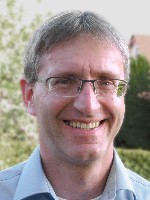 |
Stefan Brueck is Director of the Modem Technology department in Qualcomm Germany and General Manager of Qualcomm CDMA Technologies GmbH. He and his team are working on PHY receiver design for LTE-Advanced Pro, 5G NR and Wifi 11ac/11ax. In addition, he is adjunct lecturer for 4G/5G Mobile Communication Systems at Friedrich-Alexander University Erlangen-Nuremberg, Germany. Stefan Brueck started his career in Bell Labs, Lucent Technologies in 1999. Since then he held R&D positions in Alcatel-Lucent and Qualcomm focusing on PHY and MAC layer technologies for GSM, UMTS/HSPA, LTE and now NR. Stefan Brueck studied mathematics and electrical engineering at TU Darmstadt, Germany and Trinity College Dublin, Ireland. He received Dipl.-Math. and Dr.-Ing. degrees from TU Darmstadt in 1994 and 1999, respectively. |

